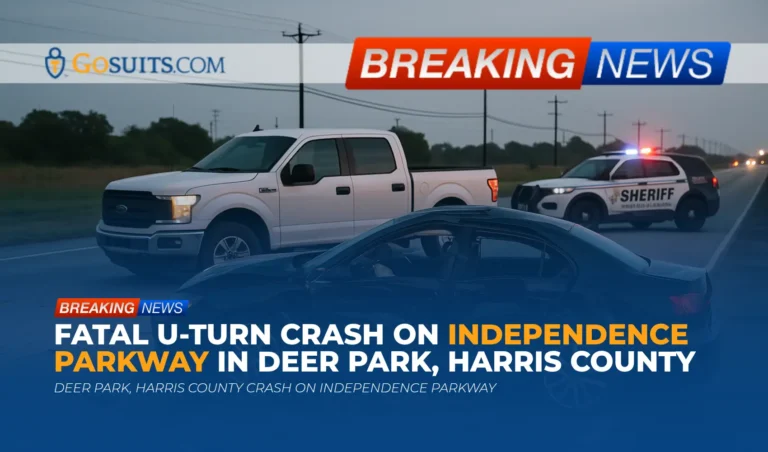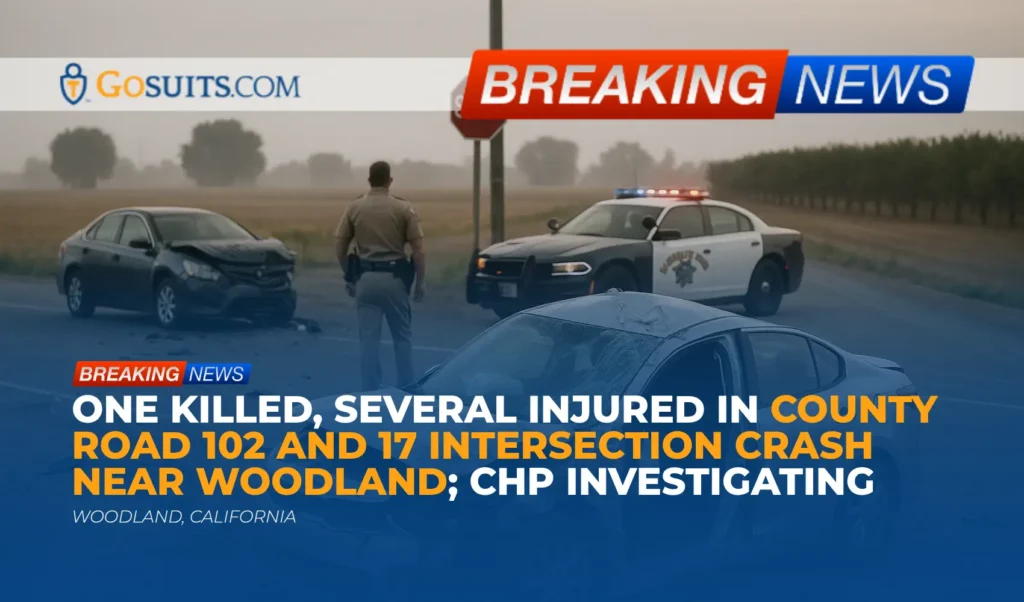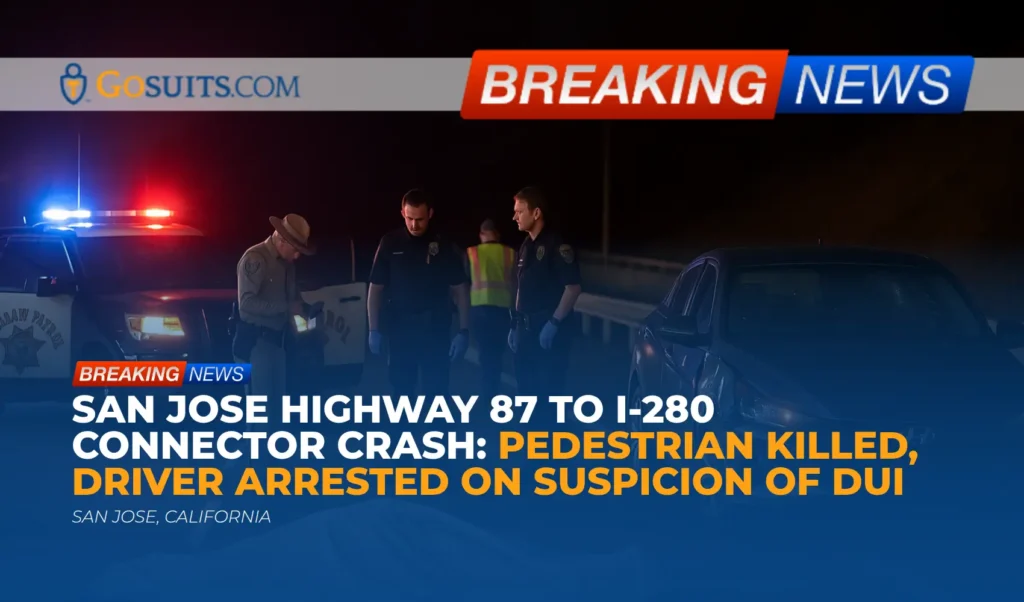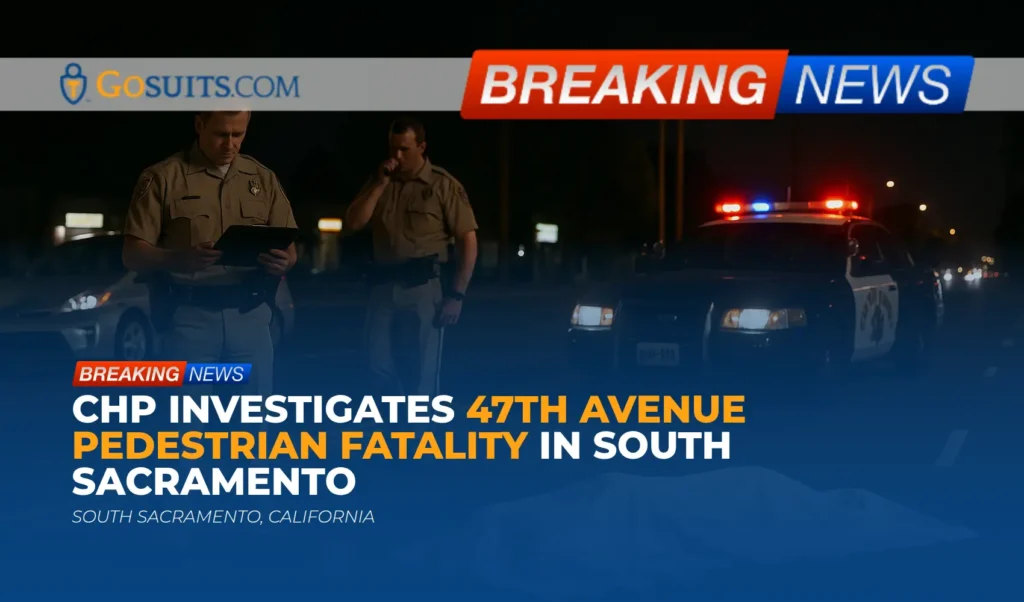- What We Know About the Deer Park, Harris County Crash on Independence Parkway
- Location Context and Traffic Conditions
- Why U-Turn Collisions Happen: A Safety and Legal Overview in Texas
- Potential Civil Claims and Liability Paths
- Steps Families Can Take After a Fatal Crash
- Wrongful Death and Survival Claims in Texas
- Supportive Public Agencies and Records in Harris County and Texas
- Data and Safety Context: Texas and U.S. Crash Trends
- What This Could Mean for Community Safety in Deer Park
- Commentary from Gosuits Deer Park, Texas Personal Injury Attorney
- Important Next Steps
What We Know About the Deer Park, Harris County Crash on Independence Parkway
A tragic two-vehicle collision in Deer Park claimed one life on Wednesday morning. According to the Harris County Sheriff’s Office, the crash occurred in the 1900 block of Independence Parkway South at about 6 a.m. Officials reported that the driver of a black sedan attempted a U-turn when a white pickup traveling on Independence Parkway struck the sedan on the driver’s side. The driver of the black sedan died from the impact. Authorities indicated both drivers appeared to be wearing seat belts, and preliminarily stated that speed did not appear to be a factor.
These early details come from law enforcement on scene. In serious crashes like this, investigators typically document physical evidence, measure distances, review roadway design and visibility, and seek any available witness statements. While initial observations can be helpful, full crash reconstructions and official reports often take time. Families and community members naturally want answers. The immediate priority is always caring for the injured, notifying next of kin, and preserving evidence to understand what happened and why.
Location Context and Traffic Conditions
Independence Parkway South is a corridor that carries commuter, industrial, and local traffic. At 6 a.m., lighting, sun angle, and traffic density can vary. Even when speed is not a factor, the combination of darkness or low light, lane configuration, and driver movements such as U-turns can create high-risk conflict points. A U-turn requires crossing multiple lanes and accurately judging the speed and distance of oncoming traffic. Any miscalculation can lead to a severe side-impact collision, which is particularly dangerous for occupants on the impacted side of a car.
Side-impact crashes are among the most injurious in traffic safety research because the space between the occupant and the striking vehicle is limited. The use of seat belts, while lifesaving in many crashes, cannot eliminate all risk in a high-energy side impact. Crash investigators will also consider whether visibility, roadway features, traffic control devices, or vehicle lighting were relevant.
Why U-Turn Collisions Happen: A Safety and Legal Overview in Texas
U-turns are lawful in Texas in many places, but they carry unique risks because they require turning across lanes where oncoming traffic may not anticipate a vehicle reversing direction. Understanding the rules that govern these maneuvers helps explain how liability is analyzed in civil claims.
Right-of-Way and U-Turn Laws in Texas
Texas law requires turning vehicles to yield to oncoming traffic that is close enough to pose an immediate hazard. When a driver intends to turn left or make a U-turn, right-of-way principles are critical. Under the Texas Transportation Code:
- Left-turn yield duty: A driver turning left at an intersection must yield the right-of-way to a vehicle approaching from the opposite direction if that vehicle is so close as to be an immediate hazard. See Transportation Code § 545.152.
- Signals: Drivers must signal an intention to turn continuously for at least the last 100 feet of movement before the turn. See Transportation Code § 545.104.
- U-turn visibility restrictions: It is unlawful to turn a vehicle to proceed in the opposite direction when approaching a curve or the crest of a grade if the vehicle is not visible to the driver of another vehicle from 500 feet. See Transportation Code § 545.102.
These rules, together with the general duty to operate with reasonable care, guide how fault is evaluated. Importantly, the presence or absence of a traffic signal, a designated U-turn area, or signage can affect expectations and safe execution of a U-turn.
Intersection and Visibility Considerations
Intersections and mid-block openings are among the most frequent crash locations nationwide. NHTSA has emphasized the complexity of intersections and the importance of yielding, scanning, and gap selection to avoid collisions, particularly in left-turn and U-turn scenarios. For general federal guidance on intersection safety, see NHTSA: Intersections.
In low light or early morning conditions, headlight use and roadway illumination affect visibility. While investigators reported speed does not appear to be a factor here, low light can make speed and distance judgments harder, increasing the risk when attempting a U-turn across lanes.
Potential Civil Claims and Liability Paths
When a fatal crash occurs, the law focuses on whether one or more parties failed to use reasonable care and whether that failure caused the harm. In a side-impact crash stemming from a U-turn, questions typically include whether the turning driver yielded appropriately, whether the oncoming driver was attentive and traveling lawfully, and whether any roadway factors contributed.
Depending on the facts, potential civil claims could involve:
- Negligent turning or failure to yield: If a driver attempts a U-turn without ensuring it is safe to do so and oncoming traffic is too close, fault may be assigned for violating right-of-way rules.
- Comparative responsibility: Texas applies proportionate responsibility, potentially dividing fault among involved parties based on each party’s conduct. See Civil Practice & Remedies Code Chapter 33.
- Roadway environment issues: In narrower circumstances, claims may consider whether signage, lighting, or design contributed. Claims involving a governmental unit require special notice and are subject to the Texas Tort Claims Act. See CPRC § 101.101 on notice requirements.
Comparative Fault in Texas
Texas’s proportionate responsibility law reduces damages by the claimant’s percentage of fault. A claimant found more than 50 percent responsible cannot recover. See CPRC § 33.001 and related sections. In fatal crashes, insurers and defense counsel often argue comparative fault, especially in turning or U-turn collisions, to limit or avoid payouts. Thorough evidence collection is essential to responding to those arguments.
Insurance Coverages That May Apply
Several types of auto coverage can impact recovery:
- Liability coverage: Texas law requires minimum 30/60/25 liability coverage, which may compensate for injuries or death caused by a policyholder’s negligence. See the Texas Department of Insurance consumer guidance at TDI: Auto insurance guide.
- PIP or MedPay: Personal Injury Protection must be offered in Texas and provides limited benefits regardless of fault, including certain medical and funeral expenses. See TDI.
- UM/UIM: Uninsured/Underinsured Motorist coverage applies if the at-fault driver has insufficient insurance. Texas insurers must offer this coverage. See TDI.
Insurance issues are complex after a fatality. Statements to insurance carriers can shape outcomes. Before contacting any insurer, it is prudent to get a free consultation to understand rights and potential pitfalls. What is said early may be used later to challenge claims.
Steps Families Can Take After a Fatal Crash
Grief and shock can make next steps feel overwhelming. The following practical steps help preserve information and support informed decisions. These are general educational suggestions; circumstances vary.
Get the Official Crash Report
Texas crash reports are maintained by state agencies. Copies are typically available a few days to weeks after the incident:
- Through TxDOT: The Texas Department of Transportation provides guidance on obtaining crash reports. See TxDOT: Crash reports.
- Through DPS: The Department of Public Safety’s Crash Records section manages records requests as well. See DPS: Crash Records.
Crash reports (often called CR-3) can include diagrams, contributing factors, and officer notes. They are a foundation for insurance claims and legal evaluation.
Obtain Autopsy or Medical Examiner Documentation
In Harris County, medicolegal death investigations are conducted by the Harris County Institute of Forensic Sciences (HCIFS). Families may request autopsy and toxicology reports, as permitted by law, through the HCIFS Records section. See Harris County Institute of Forensic Sciences: Records and the HCIFS main page at ifs.harriscountytx.gov.
These records can take time to finalize, especially toxicology. They can be important for insurance benefits and for understanding medical causes of death.

Preserve Evidence and Records
- Photographs and videos: Save any photos or videos of the scene or vehicles. If others have such materials, note their contact information.
- Witnesses: Identify anyone who saw the crash or the minutes before it. Written statements taken sooner tend to be more accurate.
- Vehicle and event data: Modern vehicles often record event data. Preserving a vehicle before repairs or salvage can be critical to retrieving this information.
- Medical and funeral records: Keep organized copies of all bills and receipts. Certain expenses can be recoverable in claims.
Handling Insurance Communications
Insurance adjusters may contact families quickly. It is common to receive requests for recorded statements or authorizations. Before engaging with insurers, consider consulting an attorney to learn about rights and potential risks. Early statements can be taken out of context later. Adjusters work for the insurance company, not for the family, and their role includes minimizing payouts.
Wrongful Death and Survival Claims in Texas
Texas law recognizes two related civil actions after a death caused by a wrongful act, neglect, or carelessness: the wrongful death claim and the survival claim.
Who May File and What Can Be Sought
Under the Texas Wrongful Death Act, a surviving spouse, children, and parents may bring a claim for their own losses resulting from the death. See CPRC Chapter 71. Recoverable categories can include pecuniary losses, mental anguish, and loss of companionship and society, among others, as the law and evidence support.
A separate survival claim allows the decedent’s estate to recover damages the decedent could have pursued if they had lived, such as pain and suffering before death and medical expenses. See CPRC § 71.021. The personal representative of the estate typically brings survival claims.
Time Limits and Notice Requirements
- General limitation period: In Texas, most wrongful death and survival claims must be filed within two years of the date of death. See CPRC § 16.003.
- Government-related claims: If a governmental unit might be implicated, notice is generally required within six months of the incident, and some local entities impose shorter deadlines. See CPRC § 101.101.
Because deadlines can be strict and exceptions narrow, documenting key dates and seeking guidance early is important.
Supportive Public Agencies and Records in Harris County and Texas
Several public entities can provide records or information that families often need after a fatal crash. These resources are official and provide pathways to obtain documents that can support insurance and legal processes.
- Crash reports: Obtainable through TxDOT’s crash report portal and DPS Crash Records.
- Medical examiner records (Harris County): HCIFS Records Request provides instructions for autopsy reports, toxicology, and related documentation.
- Public Information Act requests (general): Texas law gives the public the right to request governmental records, with exceptions. See the Texas Attorney General’s overview at Open Government: Public Information Act.
When making requests, include case numbers if available, dates, locations, and the names of involved parties. If you do not yet have a case number, agencies can often search by date and location.
Data and Safety Context: Texas and U.S. Crash Trends
Traffic fatalities are a persistent challenge in Texas and across the nation. Understanding broader patterns helps place an individual tragedy in context and can inform prevention efforts.
- Seat belts: NHTSA reports that seat belts significantly reduce fatal injury risk. For general data and safety messaging, see NHTSA: Seat Belts. Even with seat belts, side-impact collisions can be severe, emphasizing the need for careful turning and gap selection.
- Intersection crashes: National guidance underscores intersection decision-making and right-of-way as key safety factors. See NHTSA: Intersections.
- Texas fatality statistics: Statewide crash statistics and annual fatality summaries are published by TxDOT. See TxDOT: Crash statistics.
Side-impact crashes often result in more serious injuries because there is less structural protection compared to front or rear impacts. When combined with low light and multi-lane crossings, the safety margin narrows. Community awareness, roadway design review, and driver education are all part of reducing these tragedies.
What This Could Mean for Community Safety in Deer Park
When a loss like this occurs on a familiar commuter route, it prompts questions about whether additional measures could help prevent future collisions. While final responsibility assessments depend on the completed investigation, communities sometimes consider:
- Signage and markings: Reviewing whether turn lanes, U-turn signage, or lane markings are clear and visible under low-light conditions.
- Lighting: Evaluating illumination for early morning hours to improve visibility at known conflict points.
- Access management: Considering whether mid-block openings or median breaks facilitate safe U-turns or if restrictions could reduce conflict points.
- Public education: Reinforcing safe U-turn practices, such as waiting for larger gaps, signaling early, and confirming clearance across all lanes before turning.
Local agencies often review serious crashes for lessons learned, and community feedback can be helpful to prioritizing safety improvements.

Commentary from Gosuits Deer Park, Texas Personal Injury Attorney
Our thoughts are with those affected by this heartbreaking collision on Independence Parkway. This overview is intended for educational purposes and general information, and it is not a substitute for personalized guidance about any individual situation.
Based on the publicly shared details, this appears to be a side-impact collision stemming from a U-turn across travel lanes. Under Texas law, turning across oncoming traffic requires yielding to vehicles close enough to be an immediate hazard. In practice, that means patience and careful judgment about gaps and visibility. Side impacts are unforgiving; even with seat belts and lawful speeds, the forces involved can be catastrophic. A comprehensive investigation typically looks at visibility, signaling, roadway geometry, and each driver’s actions in the seconds leading up to impact.
Insurance companies and large corporations often move quickly to shape the narrative after a serious crash. They may request recorded statements, seek broad medical authorizations, or argue comparative fault to minimize responsibility. Without a clear understanding of the legal standards and the evidence needed to establish what happened, families can be placed at a disadvantage. A free consultation can help clarify rights, evidence preservation steps, and how to navigate communications so that nothing important is overlooked or misstated.
Important Next Steps
The following actions can help protect legal rights and ensure that critical information is preserved. Timing matters because physical evidence changes and deadlines apply.
- Secure official records promptly: Request the Texas crash report as soon as it becomes available and track the medical examiner documentation timeline. These records often form the backbone of any insurance or civil claim.
- Preserve vehicles and data: If feasible, prevent vehicles from being destroyed or repaired until event data and photographs are captured. Once altered, key evidence may be lost.
- Document expenses and losses: Maintain organized files of funeral costs, medical bills, and related expenses. Detailed records can influence claim valuations and reimbursements.
- Be cautious with insurer communications: Consider consulting an attorney before giving recorded statements or signing medical authorizations. Early statements can impact later outcomes.
- Calendar deadlines now: Note the two-year general limitations period in Texas for wrongful death and survival claims, and shorter notice requirements if a governmental unit could be involved. Starting early reduces the risk of missing important time limits.
- Ask questions about coverage: Clarify the presence of PIP, MedPay, UM/UIM, and liability limits. Coverage stacking and coordination can be complicated, and assumptions can lead to missed benefits.
- Request an independent review: Seek an evidence-focused assessment of turning movements, right-of-way, and visibility instead of relying solely on preliminary summaries.
Acting sooner allows a fuller investigation while witness memories are fresh and before relevant data disappears. Early clarity helps guide decisions about insurance, potential claims, and long-term planning.
Key Laws and Public Resources Cited
- Texas Transportation Code § 545.152 (Left-turn right-of-way)
- Texas Transportation Code § 545.104 (Turn signals)
- Texas Transportation Code § 545.102 (U-turn visibility restrictions)
- Texas Civil Practice & Remedies Code Chapter 33 (Proportionate responsibility)
- Texas Civil Practice & Remedies Code Chapter 71 (Wrongful Death and Survival)
- Texas Civil Practice & Remedies Code § 16.003 (Two-year limitations)
- Texas Civil Practice & Remedies Code § 101.101 (Notice to governmental unit)
- Texas Department of Transportation: Crash reports
- Texas Department of Public Safety: Crash Records
- Harris County Institute of Forensic Sciences: Records
- Texas Department of Insurance: Auto insurance guide
- NHTSA: Intersections
- NHTSA: Seat Belts
- TxDOT: Crash statistics
- Texas AG: Public Information Act overview






